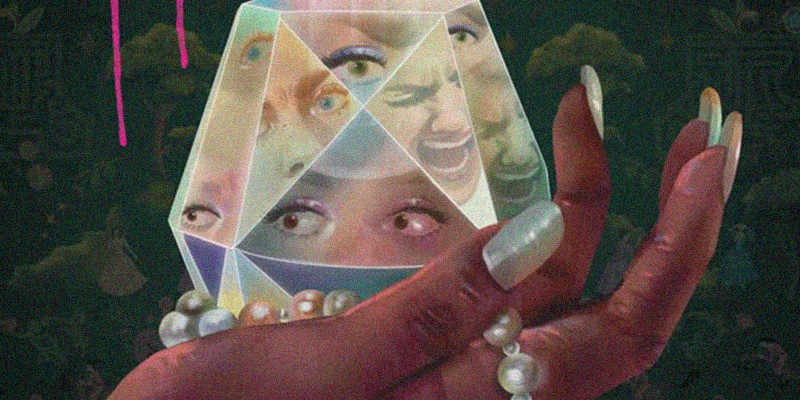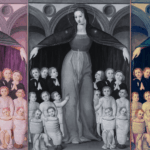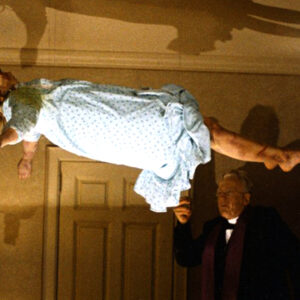I have always wanted to be the Final Girl.
I am the kind of person who delights in her own fear. There is something cathartic about the aftermath of terror, when you make your way to the end, and the credits roll. With a unique giddiness, I’d giggle, grinning into the screen until it went black. My skin would crawl and I the adrenaline of the jump scares would settle to a pleasant rush. I’d revel for a moment or two. This was excellent. This was everything. This…and then…I’d have notes. What would I have done differently? I’d think to myself. Never as the creator or the director, but as a character, placed into the world, dropped into the story. There was often an entire host of things I would’ve done differently. Don’t go in there, don’t separate from your friends, don’t turn your back to the open basement door, grab that knife-that baseball bat-that shovel while you still can. In my own mind, I would be the ultimate Final Girl, ready to triumph over the evil that had spent the entire movie terrorizing that tiny seaside town with nary a motive.
And so I have always wanted to be her. The thing about being a child—a Black girl, at that—and loving horror movies is that you see very little of yourself on the screen. As an adult, I don’t always need to seek out representation of myself in the media I consume. But as a child, it is something I lived for. Every time, I saw someone that looked like me, living fantastical lives, I would feel an elation that was unmatched.
But again, there have always been few Final Girls that look like me. When I conceptualized Their Vicious Games, I knew with immediacy what and who my Final Girl would be. Adina Walker, my Final Girl, is sometimes unlikable, sometimes stupid, and often stubborn to a fault. She is flawed in a way that Final Girls are only now allowed to be. She’s also Black. Adina exists in a story where the evil is the richest man in New England, and his motive is power he already retains. My Final Girl, for much of the novel, craved that power that he held. Adina Walker, at first, does not run away from the terror. She runs towards it. She’s a different sort of Final Girl.
But, that doesn’t mean I shunned all of her predecessors. In fact, there are a few Final Girls that helped make my Adina the sum of her parts.
While I have a special adoration for all Final Girls, there is one that has always stood above all the rest for me, and we’ll start with her: the incomparable Sidney Prescott.
Sidney Prescott, the long-term protagonist of the Scream franchise, is a personal favorite of mine. Her arc throughout the franchise is consistent. She is someone who went from girlhood to womanhood during a time that was steeped in trauma, due to her mother’s untimely murder and her own subsequent torment at the hands of Ghostface. Rather than this being shied away from, within the narrative, both Sidney’s pain and triumph serve as the emotional backbone of the franchise. Each installment depicts this arc thoroughly, from Sidney retreating into herself during Scream 2 and Scream 3, and emerging into her own at the end of the third film and displaying it in both Scream 4 and Scream 5. This emotional arc is important to see. The consequences of what Ghostface does to Sidney is important to see. It is this idea of consequences that heavily features in Their Vicious Games. Every action causes a reaction, and while crafting Adina’s character, I thought heavily about the consequences of her own actions both before the start of the novel and by the end. No one remains unaffected by what occurs in the book. There is a mark left on everyone, even the tertiary characters, just as each Ghostface left a mark on Sydney—her very absence in Scream 6 speaks to not only the trauma she’s experienced but also the healing that she has done. (This hypothesis will of course be ruined when Neve Campbell is paid an acceptable rate for her talent and returns for Scream 7.)
When continuing to craft the character arc for Adina Walker, my mind often went to the Final Girl at the center of one of my main inspirations for the novel, Ready or Not. The film is about a young woman named Grace with little outside support marrying into the extremely wealthy Le Domas family. As a newlywed and hungry to be accepted within their ranks, Grace is forced to play a deadly game of hide and seek. To win, she must survive until dawn. While Grace’s character is not rooted in suburbia like Adina, she is from the working class, which distinctly puts her in opposition of her wealthier in-laws, much like Adina and her potential in-laws. As I thought heavily about not only Adina’s character but also shaping the overall story, I thought about the well of untapped potential of the film. While Ready or Not deeply discusses class, I’ve always thought that it’s impossible to discuss class without discussing racism and gender. This is where Adina Walker lives—at the intersections of these topics—while still carrying at least a tiny bit of the tenacity and brittle rage that grows within Grace as the narrative carries her forward in the film.
The final Final Girl that helped guide the growth and inspiration behind Adina Walker and the story at large, is much more rooted in reality than Sidney Prescott and Grace le Domas—Hannah Brown of The Bachelor franchise. Now, hear me out. You may be under the impression that The Bachelor franchise is simply reality television. You would be wrong. It is deeply rooted in a horrifying scenario—20-25 single women/men competing for the attentions of a single person, all while existing in the unbearable living conditions of the Bachelor Mansion, a residence that is notably and often in a state of disrepair. They are meant to endure group dates, one-on-one dates, hometown dates, and “Fantasy Suite” dates, all while performing a narrative for the camera and the supposed object of their affections.
This alone sounds horrifying, but then one must take into account how heavily produced The Bachelor and its offshoots are. When I say ‘produced’, I mean this as a physical act. The drama and character arts are created (produced, remember) by people whose sole job is to generate good TV. In reality shows, good television means having contestants that typify to consistent archetypes (examples being the lawyer, the single mom, the Christian virgin, and the villain). Who these people are in real life doesn’t matter. All that matters is “the almighty edit”, and of these many, many people that have endured, few have risen above the character crafted in the edit. One such person is Hannah Brown.
Hannah Brown, before her stint as the titular Bachelorette of The Bachelorette season 15, placed top seven in the 23rd season of The Bachelor. Her casting as the Bachelorette didn’t come as a surprise. After all, she had received the ultimate Bachelorette edit—depicted as a bubbly, kind, if placid young woman. Hannah rose from her season of The Bachelor and returned much like Sarah Connor in Terminator 2 as a different woman. Full of depth and pathos, Hannah Brown went through her season, battling misogyny and dodging kisses from multiple frogs at every turn. As Brown emerged from her cesspool of a season, she emerged as the most followed person in franchise history (as of July 16, Brown possesses 2.7 million followers on Instagram), commanding a beloved following of what is colloquially known as Bachelor Nation. Not only is she beloved, she emerged from the franchise beau-less and is dating someone privately. This is a win. She is the Final Girl of her franchise, emerging from the other side, without needing to reach back to the franchise for relevancy.
This is the sort of ending that I wanted to create for Adina, an endurance that I find Hannah Brown embodies wholly.
Adina Walker walks in the footsteps of her predecessors. She’s too stubborn to die, too furious to give up, and has heart that some of her companions lack. She falters, but never gives up. And when she looks past what’s in front of her, she’s smart and uses what she’s got to win. She doesn’t let her villains pass Go. She endures, and pain is part of her pathology. It is also her catharsis. In that way, she mirrors the Final Girls that came before her. In other ways, she differs.
I have always wanted to be the Final Girl, but I have found few that look like me. I imagine that there are other Black girls that wish they had a Final Girl that feels like Sidney Prescott or Grace le Domas or even Hannah Brown. Now, I imagine that all they have to do is reads the words that I’ve written to find her.
***
















